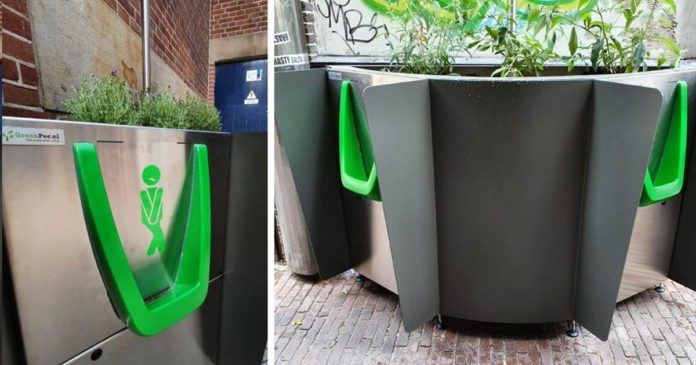It seems “wild peeing” (public urination) is a significant problem in some of the more colourful areas of Amsterdam. GreenPee and hemp have come to the rescue.
GreenPee is a combination of urinal and planter that doesn’t require a water or sewage connection. Inside the planter is a urine collection container full of hemp fibre, which absorbs the urine odor. After switching out the container once full and a subsequent composting process, what is left is a fertiliser rich in phosphate.
The plants aren’t watered with the urine as the amount they would be subject to would kill them. Instead, the GreenPee has a watering system with a 30-litre reservoir that collects rainwater; meaning the plants only need manual watering occasionally.
Checking the GreenPee’s level for when it needs emptying is either done manually or via a smart sensor that measures the urine level and sends a text message when the tank is approaching full.
The GreenPee single model is good for 300 “visits” and the double version, 450. The firm claims it is vandal-proof.
According to DutchNews, four units were placed in the Rembrandtplein district last year as a trial. The results of an independent study indicated that in one street, public urination decreased by 49%. The trial was successful enough for Amsterdam authorities to acquire twelve of the units for use in Leidseplein and Rembrandtplein.
Shredded hemp stalk has been used as a “bedding” agent for composting toilets for some years and it’s great to see its benefits in this application gaining more attention through solutions such as GreenPee.
This use of hemp is another example of how just about every part of this amazing and versatile plant has value – and why we need to continue to embrace the crop as an alternative to environmentally damaging materials, and for helping to address a wide range of issues.
Whether it’s food, fuel, fibre, construction, cosmetics or medicine or practically anything else you can think of – hemp has it covered. Learn more about the many uses for hemp.


